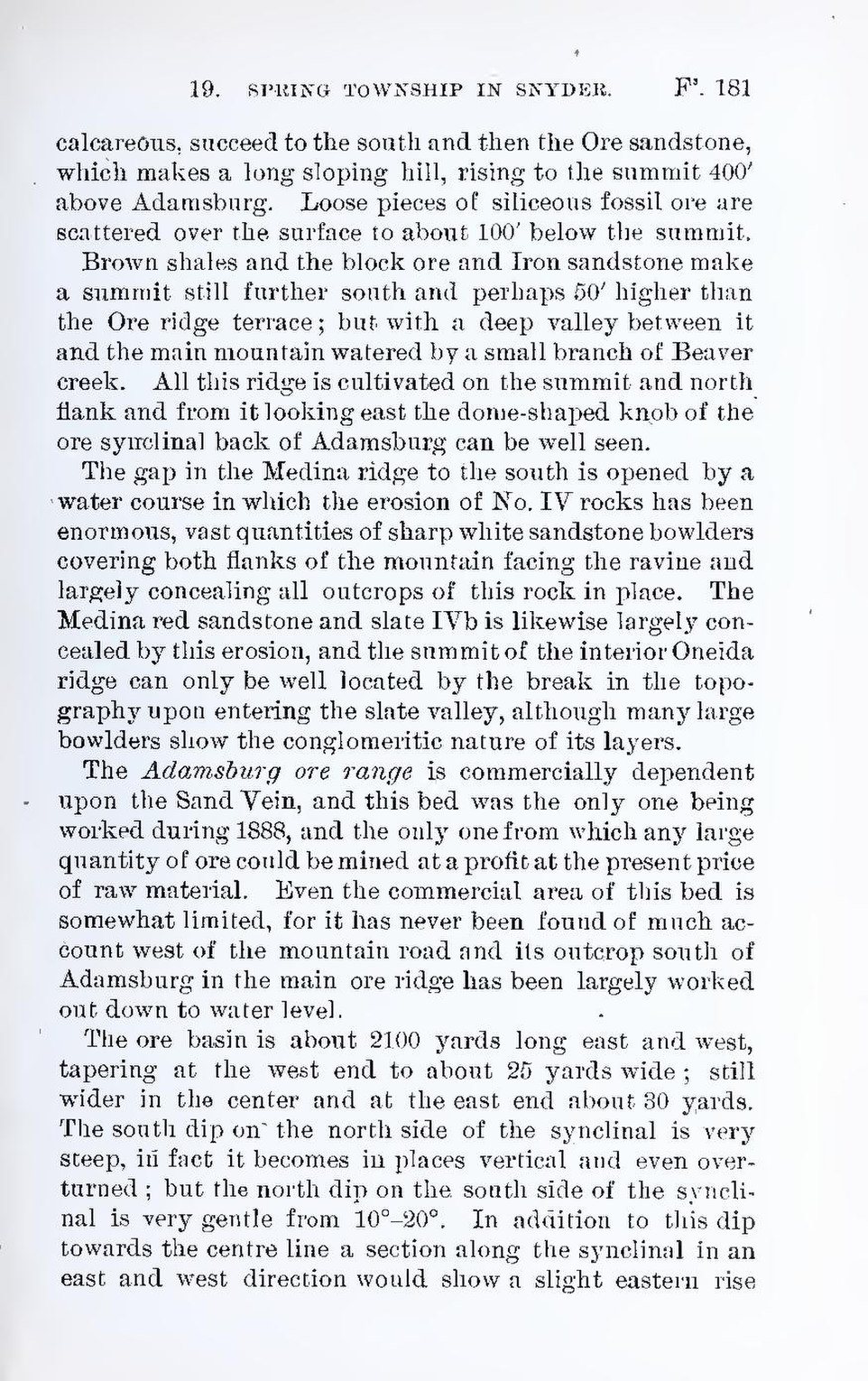calcareous, succeed to the south and then the Ore sandstone, which makes a long sloping hill, rising to the summit 400′ above Adamsburg. Loose pieces of siliceous fossil ore are scattered over the surface to about 100′ below the summit.
Brown shales and the block ore and Iron sandstone make a summit still further south and perhaps 50′ higher than the Ore ridge terrace; but with a deep valley between it and the main mountain watered by a small branch of Beaver creek. All this ridge is cultivated on the summit and north flank and from it looking east the dome-shaped knob of the ore synclinal back of Adamsburg can be well seen.
The gap in the Medina ridge to the south is opened by a water course in which the erosion of No. IV rocks has been enormous, vast quantities of sharp white sandstone bowlders covering both flanks of the mountain facing the ravine and largely concealing all outcrops of this rock in place. The Medina red sandstone and slate IVb is likewise largely concealed by this erosion, and the summit of the interior Oneida ridge can only be well located by the break in the topography upon entering the slate valley, although many large bowlders show the conglomeritic nature of its layers.
The Adamsburg ore range is commercially dependent upon the Sand Vein, and this bed was the only one being worked during 1888, and the only one from which any large quantity of ore could be mined at a profit at the present price of raw material. Even the commercial area of this bed is somewhat limited, for it has never been found of much account west of the mountain road and its outcrop south of Adamsburg in the main ore ridge has been largely worked out down to water level.
The ore basin is about 2100 yards long east and west, tapering at the west end to about 25 yards wide; still wider in the center and at the east end about 30 yards. The south dip on the north side of the synclinal is very steep, in fact it becomes in places vertical and even overturned; but the north dip on the south side of the synclinal is very gentle from 10°–20°. In addition to this dip towards the centre line a section along the synclinal in an east and west direction would show a slight eastern rise
